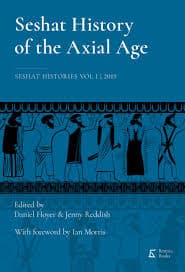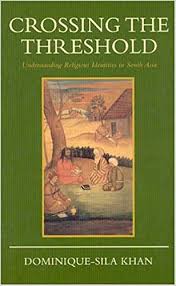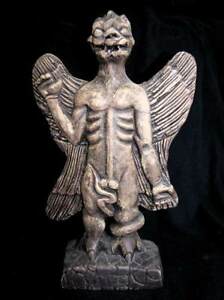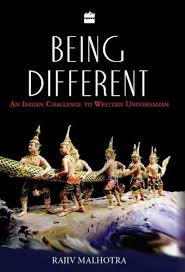 Reading Seshat History of the Axial Age chapters on India was a bit unsatisfying due to a lack of detail. But if you are looking for high-level historiography, it’s not a bad volume. It’s most definitely a good “sourcebook” on the literature.
Reading Seshat History of the Axial Age chapters on India was a bit unsatisfying due to a lack of detail. But if you are looking for high-level historiography, it’s not a bad volume. It’s most definitely a good “sourcebook” on the literature.
Because of its general and cross-cultural focus, I began considering why Indian Muslims seem so immiscible. This is, in contrast to various other groups that moved into India. One might bring up “Scythians”, but more appropriate I think might be the Ahom of Assam. They were originally Buddhists of a sort, but eventually, they became Hindu, though they retain some Buddhist rituals.
So what’s the difference? Clearly one simple difference is that Buddhism and Hinduism are both Dharmic, so the barriers between the two traditions are lower and the boundary more fluid than between Islam and Dharmic traditions. This obvious in Sri Lanka, and also in Myanmar, where the remaining Indians of Hindu origin have mostly switched their religious affiliation to Buddhism, and in Thailand, where there are native Brahmins who perform rituals at the royal court.
But I think there’s a bigger difference: India was a land of opportunity for Muslims from West and Central Asia. The constant stream of officials, soldiers, and religious eminences mean that attempts to synthesize and assimilate Indian Muslims in the same way possible with earlier peoples were going to run into the counter-force of immigrants and transplants who would constantly demanding that Indian Muslims conform to world normative Islamic practices and beliefs. One illustration of this is the role of the Naqshbandi order in demanding that Muslim rulers not stray and that Hindus and Muslims should not mix excessively.
 The only work that addresses the possibility of assimilation and synthesis in detail that I know of is Dominique-Sila Khan’s Crossing the Threshold: Understanding Religious Identities in South Asia. In the wake of the mass migration of Muslim Turks and Afghans under the Delhi Sultanate, a large number of Indians became Muslim, of various sorts. But with the decay of the Delhi Sultanate, and the decentralization of power and rule, Dominique-Sila Khan outlines her thesis that many Muslim and Hindu groups experimented with beliefs and practices which were synthetic, creating liminal identities. With the rise of the Mughal Empire and its integrative tendency, as well its excellent connections to the “Islamic international,” the liminal groups were forced into more standard and distinct confessional identities.
The only work that addresses the possibility of assimilation and synthesis in detail that I know of is Dominique-Sila Khan’s Crossing the Threshold: Understanding Religious Identities in South Asia. In the wake of the mass migration of Muslim Turks and Afghans under the Delhi Sultanate, a large number of Indians became Muslim, of various sorts. But with the decay of the Delhi Sultanate, and the decentralization of power and rule, Dominique-Sila Khan outlines her thesis that many Muslim and Hindu groups experimented with beliefs and practices which were synthetic, creating liminal identities. With the rise of the Mughal Empire and its integrative tendency, as well its excellent connections to the “Islamic international,” the liminal groups were forced into more standard and distinct confessional identities.
One unsurprising aspect of this is that demands for orthodoxy from the Sunni Muslims hit various Shia groups, in particular, ghulat sects among the Ismailis, particularly hard. Though forced conversions of Hindus no doubt occurred, we know for a fact that there was a systematic campaign to convert whole groups of Ismailis in regions such as Gujarat to Sunni Islam. These campaigns were on the whole successful.
Can we test my hypothesis that exogenous interaction and contact explain the relative lack of assimilation of Muslims into the Indian-Hindu identity? Yes. But not with India. Rather, there were multiple instances in China where small Muslim groups lost contact with the “outside world” (that is, Muslims in Central Asia). These groups at the elite levels became strongly influenced by Confucianism, and at the popular level took elements resembling Pure Land Buddhism. Though some Muslims were absorbed into Chinese folk religious milieu, the heterodox sects never became a new religion on the Chinese scene. Why? Because periodically contact would be reestablished with Muslims from Central Asia (again, the Naqshbandi order played a big role here), and deviations would be purged.
There is a final example that illustrates what happens to distinctive religions when they are totally isolated. In the early 17th-century, Japan banned Christianity and isolated itself from the rest of the world. But small groups of Catholic Christians maintained their identity in secret. These “Hidden Christians” were rediscovered in the 19th-century. The majority became conventional Catholics…but a minority remained “Hidden Christians”, and had taken on many elements of Japanese folk religion, as well as Pure Land Buddhism.
Can Islam than ever be indigenized in South Asia? Ask the Persians how easy it is to take Arabicity out of Islam…
Update: I suggest in the comments below that the foreign dominance among South Asia’s Muslim elites served to prevent the conversion of native elites.
 An argument that emerges now and then on this website has to do with the nature of the ancestors of Indian (South Asian) Muslims. Where they Hindus? Much hinges on semantics. The term “Hindu” after all simply meant Indian in the days of yore, so by definition, they were.
An argument that emerges now and then on this website has to do with the nature of the ancestors of Indian (South Asian) Muslims. Where they Hindus? Much hinges on semantics. The term “Hindu” after all simply meant Indian in the days of yore, so by definition, they were.
 In my view a level 5 PISA score is the minimum requirement for a person to be considered a high school graduate who is literate in math, able to function in the modern global economy, or be qualified to attend college. The PISA report defines a level 5 PISA score or better as a fifteen year old that “can model complex situations mathematically, and can select, compare and evaluate appropriate problem-solving strategies for dealing with them.”
In my view a level 5 PISA score is the minimum requirement for a person to be considered a high school graduate who is literate in math, able to function in the modern global economy, or be qualified to attend college. The PISA report defines a level 5 PISA score or better as a fifteen year old that “can model complex situations mathematically, and can select, compare and evaluate appropriate problem-solving strategies for dealing with them.” 
